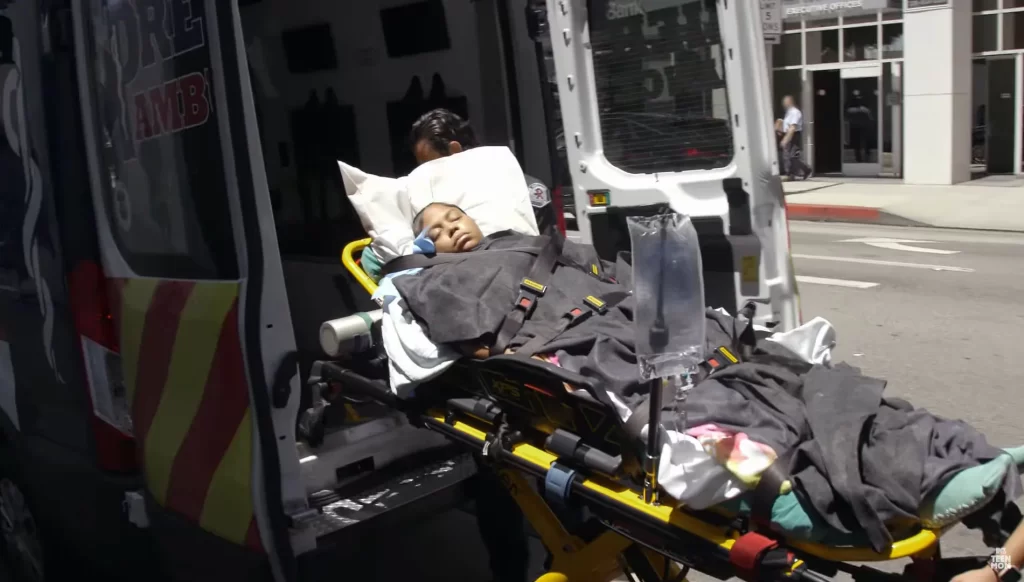Overview of the Incident Involving Cheyenne and Zach
The incident involving Cheyenne and Zach refers to a shooting event that occurred in a specific context, likely involving individuals named Cheyenne and Zach. While details about the specific event may not be readily available, similar incidents often raise questions about safety, community response, and the implications of gun violence.
Background
Gun violence has become a significant issue in many communities across the United States and around the world. Each incident often sparks discussions about mental health, gun control laws, and community safety measures.
Key Points to Consider
- Understanding Gun Violence: Gun violence can stem from various factors, including social, economic, and psychological issues. Understanding these factors is crucial for addressing the root causes of such incidents.
- Community Impact: Incidents of gun violence can have a profound impact on communities, leading to fear, trauma, and a call for action to improve safety measures.
- Legal and Social Responses: Following such incidents, communities often engage in discussions about legal reforms, community programs, and support systems for those affected.
Table of Key Information
| Aspect | Details |
|---|---|
| Incident Type | Shooting incident involving Cheyenne and Zach |
| Community Impact | Fear, trauma, and calls for safety measures |
| Factors Contributing | Social, economic, and psychological issues |
| Possible Responses | Legal reforms, community programs, support systems |
The Nature of Gun Violence
Definition and Scope
Gun violence encompasses a range of incidents involving firearms, including homicides, suicides, unintentional shootings, and mass shootings. According to the Centers for Disease Control and Prevention (CDC), gun violence is a significant public health issue in the United States, leading to thousands of deaths and injuries each year.
Statistics
- Homicides: In 2021, there were approximately 20,000 gun-related homicides in the U.S.
- Suicides: Firearms are involved in more than half of all suicides, highlighting the mental health aspect of gun violence.
- Mass Shootings: The frequency of mass shootings has increased, drawing national attention and calls for reform.
Factors Contributing to Gun Violence
Understanding the root causes of gun violence is crucial for developing effective prevention strategies. Several interrelated factors contribute to this issue:
1. Mental Health Issues
Mental health plays a significant role in many incidents of gun violence. Individuals experiencing severe mental health crises may resort to violence, either against themselves or others. Access to mental health care and early intervention can be critical in preventing such tragedies.
2. Socioeconomic Conditions
Economic disparities can lead to increased crime rates, including gun violence. Communities with high poverty rates may experience higher levels of violence due to a lack of resources, education, and opportunities.
3. Access to Firearms
The availability of firearms is a significant factor in gun violence. Countries with stricter gun control laws tend to have lower rates of gun-related deaths. In the U.S., the ease of access to firearms contributes to the frequency and lethality of gun violence incidents.
4. Cultural Factors
Cultural attitudes toward guns can influence rates of gun violence. In some communities, firearms are seen as symbols of power or protection, which can lead to a normalization of gun use in conflict situations.
The Impact of Gun Violence on Communities
Psychological Effects
The psychological impact of gun violence can be profound. Survivors, witnesses, and community members may experience trauma, anxiety, and fear. These psychological effects can persist long after the incident, affecting individuals’ quality of life and community cohesion.
Economic Consequences
Gun violence also has significant economic implications. The costs associated with medical care, law enforcement, and lost productivity can strain community resources. Additionally, communities affected by gun violence may experience decreased property values and reduced investment.
Social Disruption
Gun violence can disrupt social structures and lead to increased mistrust among community members. It can create a cycle of fear and retaliation, further perpetuating violence and instability.
FAQ Section
Q1: What happened in the incident involving Cheyenne and Zach?
A1: Specific details about the incident are not available in the search results, but it likely refers to a shooting event involving these individuals.
Q2: Why is gun violence a significant issue?
A2: Gun violence poses a threat to community safety and can lead to loss of life, trauma, and long-lasting societal impacts.
Q3: What are the common factors contributing to gun violence?
A3: Factors may include mental health issues, socioeconomic conditions, access to firearms, and community dynamics.
Q4: How do communities respond to incidents of gun violence?
A4: Communities may respond through advocacy for legal reforms, increased security measures, and support for mental health resources.
Q5: What can be done to prevent gun violence?
A5: Prevention strategies can include community education, mental health support, stricter gun control laws, and conflict resolution programs.
Conclusion
While the specific details regarding the incident involving Cheyenne and Zach are not available, it is essential to recognize the broader implications of gun violence in society. Understanding the factors contributing to such incidents and fostering community dialogue can help address these critical issues.For more detailed information on gun violence and its implications, you can refer to resources available on government websites or educational platforms, such as the CDC, which provides statistics and insights into gun violence prevention.



